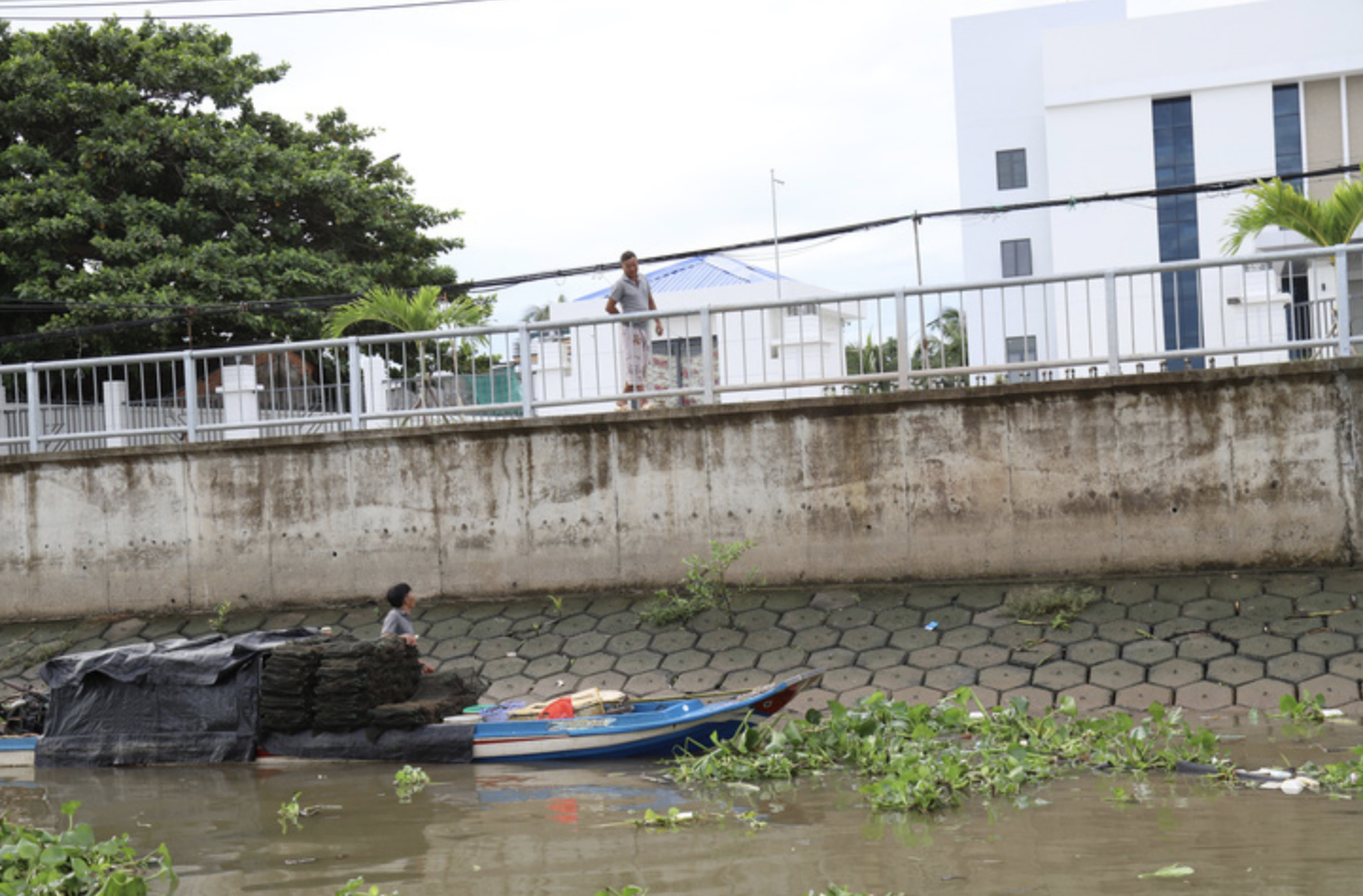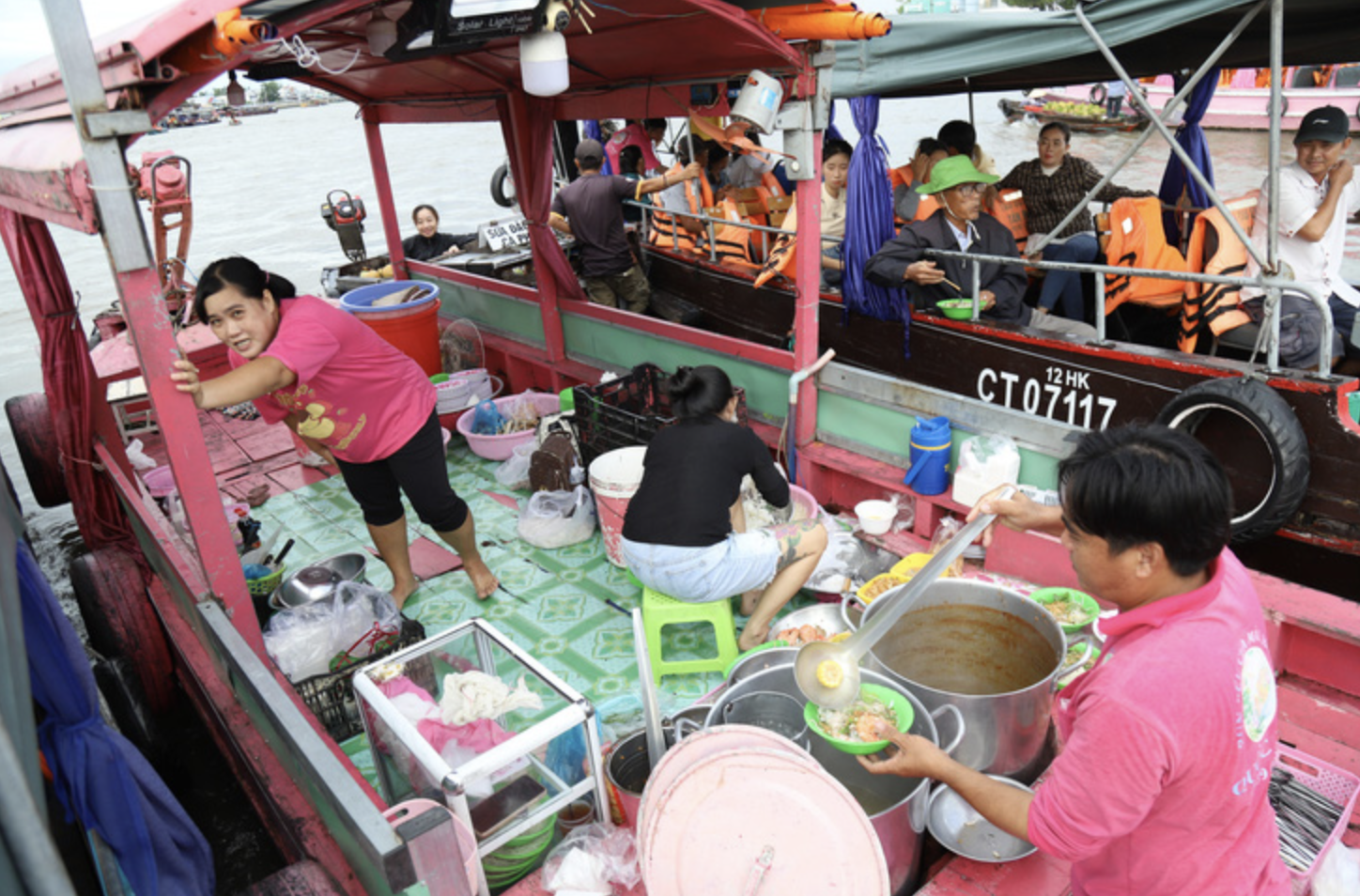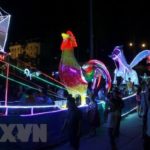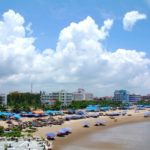The Secret to Reviving Vietnam’s Iconic Floating Market
A number of floating markets are in danger of fading into obscurity as boat, vendor, and buyer numbers dwindle, resulting in a decline in trade.
As a director of a hospitality services company in Phong Dien District, Can Tho City, Martin Stiermann, a German national, shared his insights and recommendations with Tuoi Tre (Youth) newspaper on how to restore the bustling atmosphere of the floating markets in the Mekong Delta.
“I’ve noticed the changes in Cai Rang Floating Market over the years,” he said.
At a conference several months ago, I suggested that the floating market should not be enclosed by concrete. However, the construction of a high anti-erosion embankment has now deterred boats and traders from coming.”
The decreasing number of boats at the floating market has led to a less vibrant trading environment and a subsequent drop in tourism.
While Cai Rang Floating Market, one of Can Tho City’s main attractions, has undergone significant changes, Phong Dien Floating Market continues to captivate tourists.
Even though Phong Dien is not as well-known or expansive as Cai Rang, it still embodies the authentic charm of the Mekong Delta.
“My family and I visited neighboring Vinh Long Province a month ago. We took a tour of the Co Chien River and explored the brick kilns and a coconut house there,” he shared.
According to Stiermann, these sites may not be exceptionally unique, but they embody the distinctiveness of the delta. He expressed his disappointment in the modernization of Cai Rang Floating Market, which has led to a loss of its original essence.
|
|
| An embankment along the Can Tho River, where boats and traders once flourished at Cai Rang Floating Market. Photo: Chi Quoc / Tuoi Tre |
Many foreign tourists have taken to Facebook and other social media platforms to express their disappointment with the changes in Can Tho City. They worry that modernizing the floating market might deter tourists from visiting.
Stiermann hopes that local authorities will strike a balance between preserving the market’s uniqueness and meeting the expectations of tourists as they develop the area.
While the construction of roads and bridges has improved transportation, it has inadvertently impacted the merchants at the floating market.
To support these merchants, authorities could consider reducing tax rates and providing vendors with ao ba ba, traditional garments of the southern region, to help sustain their trading activities and attract travelers.
Stiermann also proposed the idea of offering tours that combine sightseeing with purchasing farm produce at the floating market, thus encouraging trade.
“I much prefer buying goods and enjoying a cup of coffee on a boat rather than on land,” he added.
Creating favorable conditions for merchants to feel confident and positive about their trading activities at the floating market is of utmost importance, as explained by the foreigner.
He suggested that vendors use eco-friendly glasses and boxes instead of plastic ones to appeal to tourists and demonstrate environmental responsibility.
“I’ve heard from foreigners that Vietnam’s southwestern region is enchanting, with delicious cuisine and unique cultural attractions. However, they are reluctant to return due to the noise from karaoke,” Stiermann elaborated.
Addressing the issue of karaoke noise on boats at the floating market is crucial for attracting and retaining tourists, especially international visitors.
Additionally, Stiermann proposed that the Mekong Delta provinces work together to develop river-based tourism, showcasing the diverse cultural offerings of different ethnic groups.
Such collaboration would provide tourists with a diverse range of souvenirs, specialties, and cultural performances to enjoy and take home.
Lastly, he emphasized that the areas along both banks of the Can Tho River should prioritize tourism-related services, products, and structures over residential development to support the growth of the local tourism industry.
|
|
| Martin Stiermann offers suggestions to support the merchants and enhance the appeal of Cai Rang Floating Market. Photo: Chi Quoc / Tuoi Tre |
The post The Secret to Reviving Vietnam’s Iconic Floating Market appeared first on Vietexplorer.com.







Comments
Post a Comment